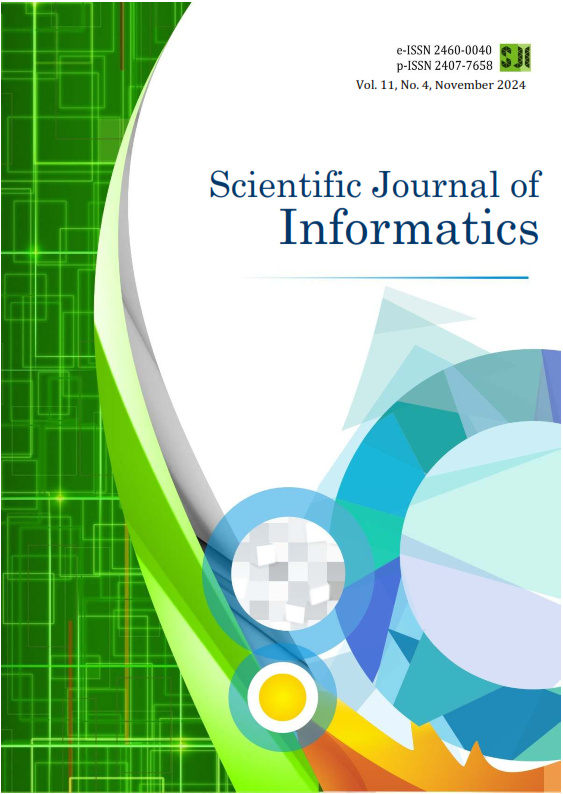Brain Tumor Detection Using Improved Fuzzy Logic Classifier Model Based on K-folds Validation
DOI:
https://doi.org/10.15294/sji.v11i4.13964Keywords:
Brain tumor, Computer vision, Fuzzy logic, GLCM extraction, K-Folds validationAbstract
Purpose: This study aims to improve brain tumor detection by integrating Fuzzy Logic with K-folds validation to enhance classification accuracy and robustness. The research addresses the challenge of distinguishing between normal and abnormal brain MRI images.
Methods: This study utilized a public dataset from Kaggle comprising 2,660 MRI images, initially categorized into four classes: Glioma, Meningioma, Pituitary, and No Tumor. For the study, Glioma, Meningioma, and Pituitary were combined into one abnormal label, resulting in two classes: Normal and Abnormal. The methodology involved pre-processing the images, applying Fuzzy Logic with K-folds validation (K=3), and evaluating the model’s performance using single prediction tests.
Result: The proposed approach achieved an exceptional accuracy of 99.88% during the K-folds validation process. The model demonstrated strong performance across all test samples, accurately classifying both normal and abnormal cases, with true positive results in single prediction tests.
Novelty: This study introduces a novel combination of Fuzzy Logic with K-folds validation, demonstrating a significant improvement in classification accuracy compared to existing methods. The integration of these techniques offers a robust framework for brain tumor detection, enhancing diagnostic precision and addressing the challenge of distinguishing between various tumor types in MRI images.

